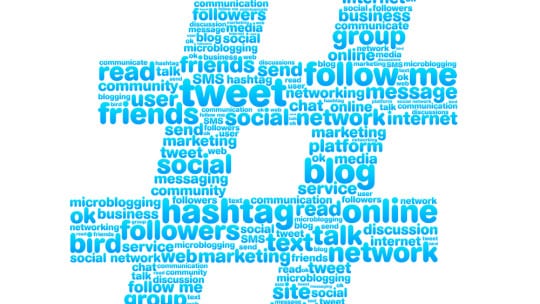
Brands and organizations from Lifetime Movie Network (LMN) to the member unions of the AFL-CIO last week hopped on one of the week’s trending hashtags #EqualPayDay, celebrating a holiday that brings attention to the disparity between the pay of men and women in some sectors.
For LMN and other media brands that target women, tweets and Instagram posts with the #EqualPayDay hashtag seemed authentic. For brands in sectors seen as perpetuators of unequal pay, however, social conversations with #EqualPayDay affixed to them were problematic. Most stayed away from the relatively new holiday, which started in 1996.
While brands with a strong presence in social media have been hopping on hashtags linked to news events and even creating hashtags, it seems clear from what we hear on the circuit that while many PR pros use hashtags and know about them generally, plenty of us sheepishly admit that hashtags are mysterious in their power. Questions we receive and have heard at PR News events include “What happens to a hashtag after I use it on a post?” “How does it get counted?” “How many hashtags should I put on a post?” “How will people know about my hashtag?”“How can I use hashtags without turning people off from my brand?” With these questions and more in mind, we asked hashtag specialists to assist in explaining these conundrums and offering best practices.
1. From the Beginning: Hashtags came into use in 2007, although Twitter accepted them reluctantly. Now when you use the pound or hash sign on Twitter, it turns a word or word group that follows it into a searchable link. This allows a brand to organize content and track discussion topics based on those keywords. And capitalization doesn’t matter in terms of analytics, so #EqualPayDay is #equalpayday. Yes, there’s Twitter Analytics [see sidebar]. Click on a hashtag and you will see all the posts mentioning that subject in real time.
2. Hashtags as Buckets:Kelley McLees, senior digital account manager, Everywhere Agency, says the easiest way to think about a hashtag is as a bucket of information. “Hashtags are a way to organize information, especially regarding live events,” she says. Adds Margaret Case Little, senior director, communications & brand strategy, National Retail Federation, “Hashtags are essential for audience discovery and conversation engagement.”
3. Promote It Everywhere: When a brand decides to create a hashtag “you need to promote it everywhere,” McLees says. Adds Little, “Promotion of a brand hashtag must be baked into every tactic of a campaign.” Although creating hashtags can assist branding, it’s not essential that brands create their own; however, “it is absolutely pivotal to leverage existing hashtags,” Little says.
4. Caveat Emptor: Brands need to be careful to remain authentic. For example, if singer Miley Cyrus is trending, it’s inauthentic to tweet an unrelated message like “Enjoy our ice cream today” and append #Miley to it merely to take advantage of the trending hashtag. Infamously, fashion brand Kenneth Cole tweeted during the Arab spring, “Millions are in uproar in #Cairo. Rumor is they heard our new spring collection is now available online.” Little notes, “The conversations associated with any hashtag can flip in a moment...there’s certainly risk involved. You can decrease this risk by doing your research, thinking through possible reactive scenarios...and remaining aware of user trends in real time.”
5. Hashtag Creation: A key point about creating brand hashtags is to be direct and simple. A rule of thumb: Create a hashtag with words that people will search for, McLees says. “Will they Google those words?” In addition, “Practical is always better than clever...at the end of the day it has to be clear what you’re promoting.”
Editor’s Note: Both McLees and Little will be speaking at PR News’ Social Media Workshop Apr 20: http://www.prmeasurementconf.com
Hashtag tips
- Know Your Audience: As with nearly every initiative you take in PR, researching your target audience before wading in is recommended. Ditto with hashtags. “Know what your audience will respond to, what hashtags it is following, when, etc…and most important, be authentic to your brand,” McLees says.
- Use Analytics: “Twitter Analytics is free, very easy to learn...it’s easy to train yourself...and it provides a lot of insight,” McLees says. “You can see who your audience is, their demographic, what tweets are doing well on your channel, and what posts people are interacting with.”
- Images, GIFs and Videos: Think of Twitter as a newspaper, McLees says. How many times have you read an article in a newspaper because you were intrigued by the photo? “It’s the same thing with Twitter…posts with images, GIFs or video outperform on every platform.”
CONTACT: @kelleymclees [email protected]
